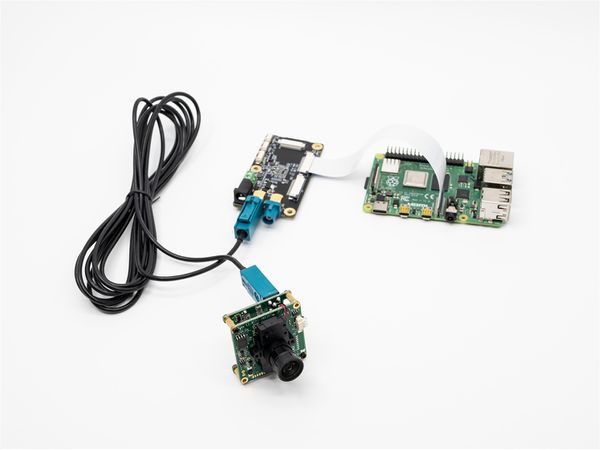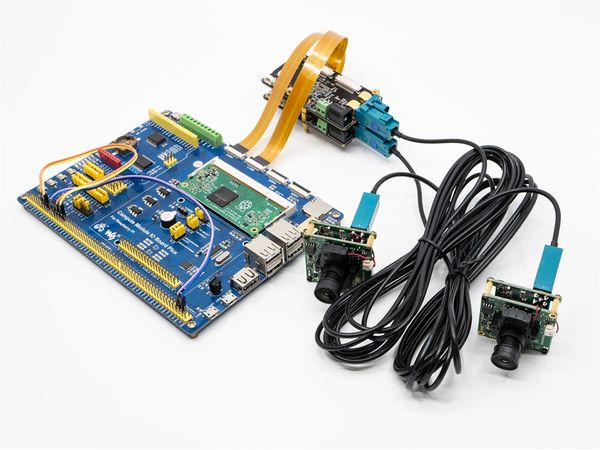Difference between revisions of "CS-FPD-CAM for Raspberry Pi"
| Line 14: | Line 14: | ||
== Hardware Setup == | == Hardware Setup == | ||
| − | + | [[File:RaspberryPi4 connect with CS-FPD-CAM.jpg|center|thumb|600x600px|RaspberryPi4 connect with CS-FPD-CAM|link=http://wiki.veye.cc/index.php/File:RaspberryPi4_connect_with_CS-FPD-CAM.jpg]] | |
| + | |||
| + | |||
| + | [[File:RaspberryPi CM3 connect with 2 FPD-LINK-CAMs.jpg|center|thumb|600x600px|RaspberryPi CM3 connect with 2 FPD-LINK-CAMs|link=http://wiki.veye.cc/index.php/File:RaspberryPi_CM3_connect_with_2_FPD-LINK-CAMs.jpg]] | ||
| + | |||
| + | |||
| + | PS:[[FPD-LINK3-2RX Data Sheet index|FPD-LINK3-2RX]] need a 12V DC power. | ||
== RaspberryPi System Setup and Configuration == | == RaspberryPi System Setup and Configuration == | ||
Revision as of 09:41, 4 November 2020
1 Introduction
FPD-Link SerDes III is a coaxial remote transmission scheme of video stream provided by TI. We have designed FPD-LINK3-TX and FPD-LINK3-2RX boards, which can realize coaxial transmission of 1 or 2 channels of MIPI CSI-2 images, and the transmission distance can be up to 10 meters.
On the Raspberry PI platform, a set of FPD-LINK3-TX and FPD-LINK3-2RX boards are used to realize the remote transmission of 1-channel video. The I2C address of the camera after initialization configuration is the same as that of the original camera.
For application layer, a completely transparent FPD-Link channel is implemented, including image, i2C communication, synchronous IO and trigger IO.
Therefore, when using CS-FPD-CAM, you must refer to the following articles:
- How to use VEYE-MIPI-X camera module on Raspberry Pi
- How to use CS-MIPI-X camera module on Raspberry Pi
2 Hardware Setup
PS:FPD-LINK3-2RX need a 12V DC power.
3 RaspberryPi System Setup and Configuration
4 Sofware Toolkits Install
5 FPD-Link III shell script manual
6 Typical application

